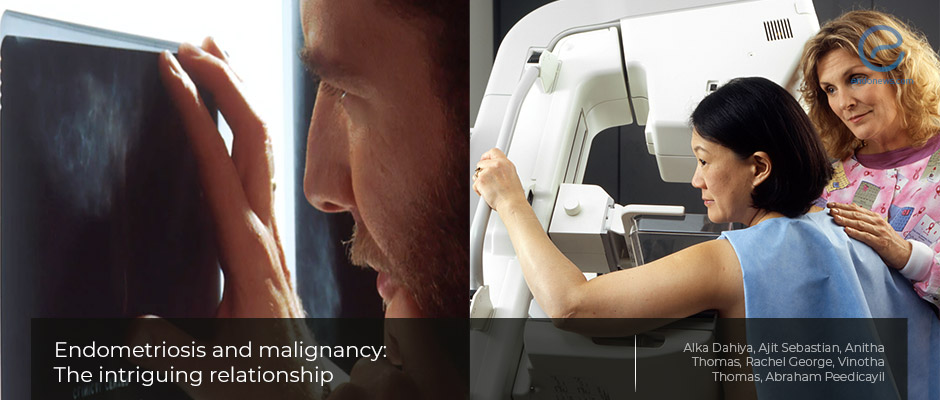Ovarian, breast and endometrial cancer coexisting with endometriosis.
Feb 16, 2021
Long-lasting endometriosis with advancing age would be a risk for the aforementioned malignancies.
Key Points
Importance:
- Endometriosis is associated with an increased risk of ovarian, endometrium, and breast cancers.
Highlights:
- Increasing age, being in the postmenopausal period, larger endometriomas, a higher level of Ca125, and long-lasting endometriosis are predictive risk factors for malignancy in endometriosis patients.
What's done here:
- This is a retrospective and cross-sectional study by a gynecologist team from India, a tertiary care hospital, to determine the prevalence of coexisting malignancy and endometriosis.
- It evaluates pathologically proven 800 endometriosis cases, 104 of them diagnosed with endometriosis + one or two organ cancers, and operated in this period of time.
- Type of the cancers and predictive risk factors are examined and the statistical assessment was made compared to the control (endometriosis without cancer) group.
Key results:
- The prevalence of malignancy with coexisting endometriosis was found 13% in this study (6.2% ovarian, 4.1% endometrial, 1.8%breast, and 0.9% synchronous)
- The prevalence of malignancies was similar for ovarian endometriosis and deep infiltrating pelvic endometriosis.
- The use of oral contraceptives was significantly lower in the malignancy group.
- Larger endometriomas, older ages, higher Ca 125 levels, and a duration of more than 5 years of endometriosis have a significant impact on causing cancers when the control group compared to the malignancy group.
Strength and Limitations:
-
The strength of the study is the large sample size from a single institution, the uniform treatment, and histological verification of diagnosis.
-
The possibility of risk overestimation of malignancy may be due to the inclusion of patients with more severe or long-standing disease.
-
Lack of randomization, restriction, and matching to control confounding bias, and
-
The absence of a comparison group, all inherent to the cross-sectional nature of the study, are the main limitations.
Lay Summary
The invasive nature of endometriosis results in calling the disease " benign cancer". The transformation of endometriosis to malignancy is rare, but when compared to the general population, the relative risk of developing ovarian cancer is 4.2 times greater especially in women with long-lasting endometriosis.
Based on this important fact, a retrospective, cross-sectional study was planned by a group of researchers from the Department of Obstetrics and Gynecology of Christian Medical School, Vellore, India, to determine the predictive risk factors of cancer coexisting with endometriosis. The paper has recently published in "International Journal of Obstetrics and Gynecology".
This study includes 800 women with endometriosis, 13% of which were diagnosed with endometriosis and related malignancies during the study period. Fifty women were diagnosed with ovarian clear-cell carcinoma or endometrioid cancer. Thirty-three patients had endometrial cancer, most were endometrioid in type. Fourteen patients had breast carcinoma of invasive ductal type and most were positive for estrogen and progesterone receptors. There were 6 patients who had synchronous endometrial and ovarian malignancy of endometrioid origin.
Predictive risk factors of cancer formation in endometriosis patients were evaluated using univariate analyses and then subjected to multivariate logistic regression. Significant importance for increasing age, postmenopausal status, higher Ca 125 levels, larger size endometrioma, and longer disease duration (>5 years) was found for coexisting malignancies and endometriosis. A cut-off of 8 cm for endometrioma diameter was predictive of malignancy.
"Additional studies need to be conducted to develop better prevention, screening, and treatment approaches for malignant transformation of endometriosis. To optimize early diagnosis and management, and to decrease the morbidity and mortality, it will be necessary to incorporate a risk-assessment score into the existing logistical framework; close monitoring and follow-up to ensure changes are implemented" concluded the authors.
Research Source: https://pubmed.ncbi.nlm.nih.gov/33415752/
ovarian endometriosis deeply infiltrated endometriosis breast cancer endometrial cancer ovarian cancer endometriosis.

